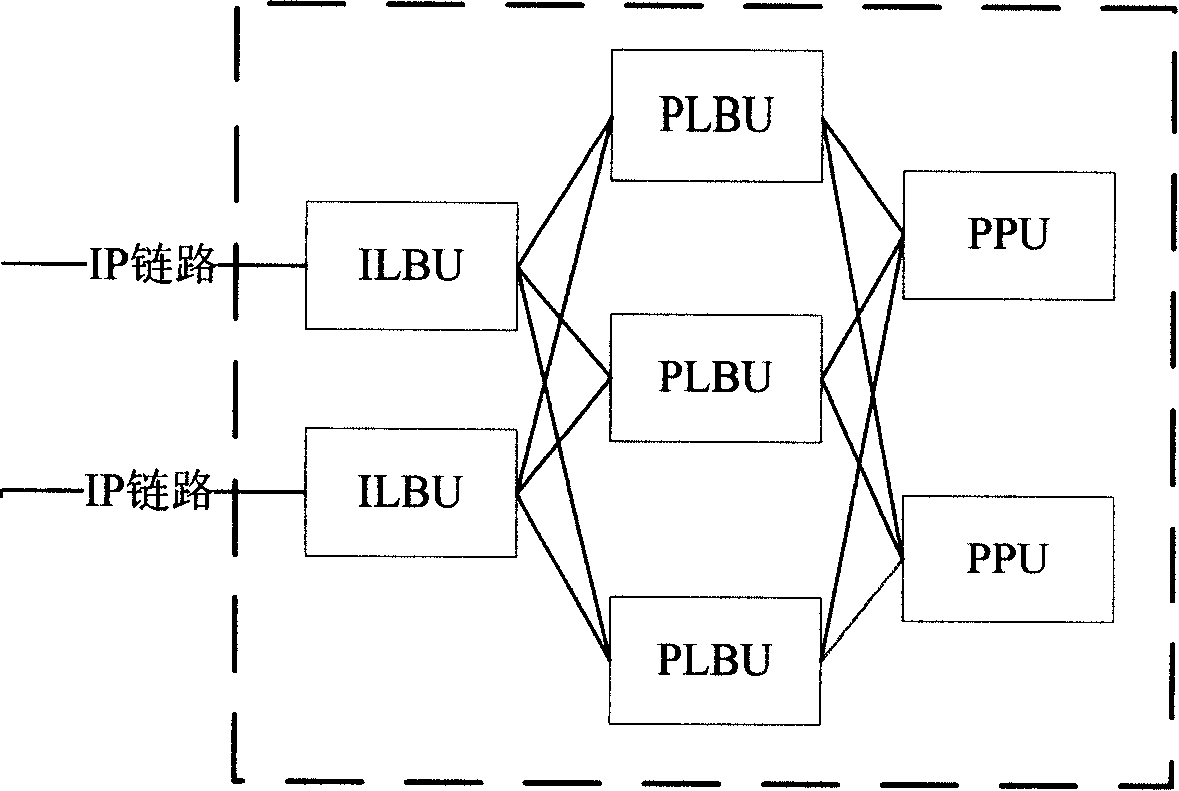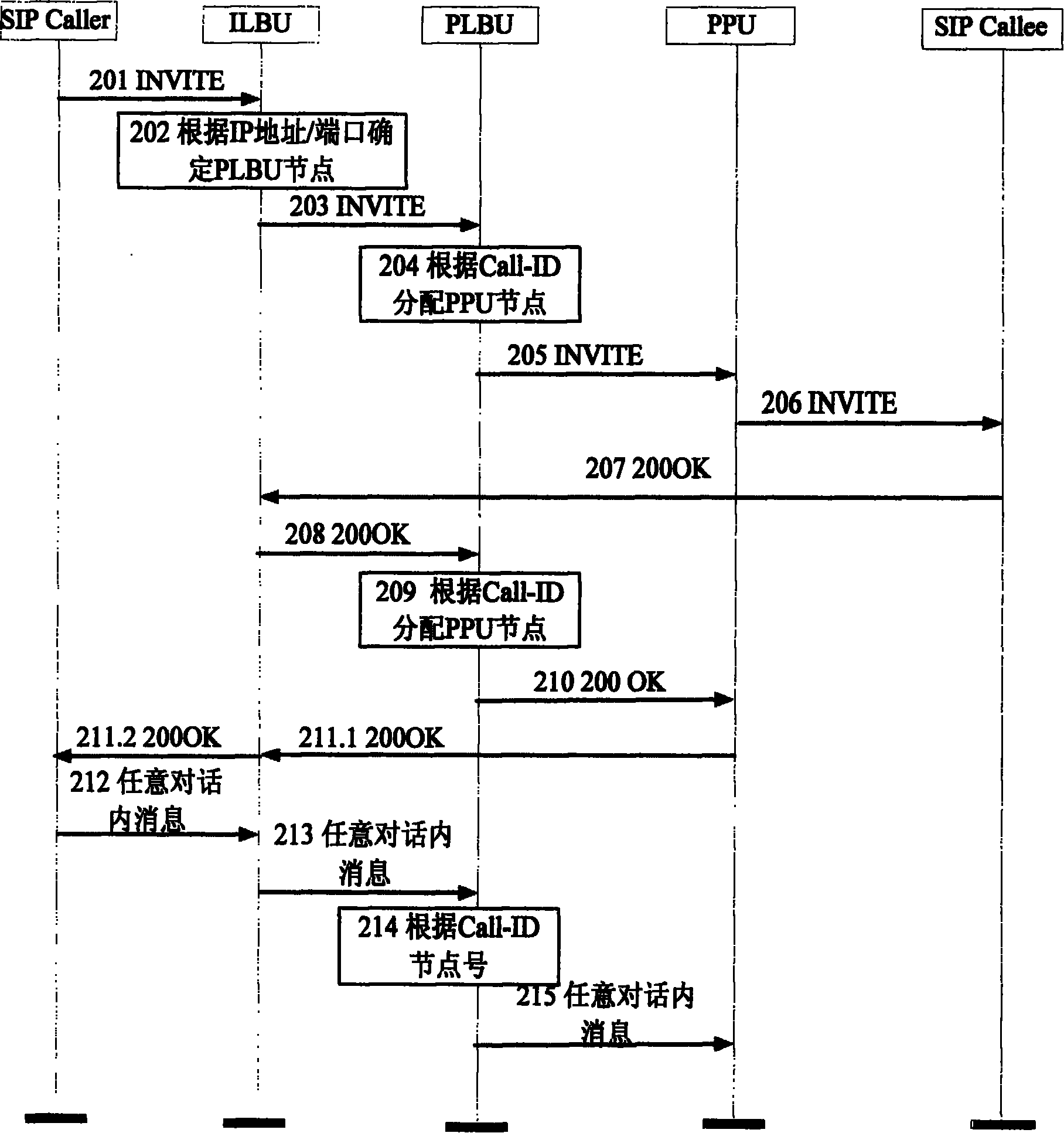Method fro dynamic load balance in distributed system based on session origination protocol
A session initiation protocol and distributed system technology, applied in the transmission system, electrical components, etc., can solve the problems of high synchronization state overhead, increased bottom layer overhead, and inability to achieve dynamic load balancing, etc., to achieve the effect of improving reliability
- Summary
- Abstract
- Description
- Claims
- Application Information
AI Technical Summary
Problems solved by technology
Method used
Image
Examples
Embodiment Construction
[0049] figure 1 It is a logical frame diagram of a distributed SIP system, showing logical nodes such as ILBU (IP load balancing unit), PLBU (protocol load balancing unit), PPU (protocol processing unit) and their connection relationships. In the actual system design, the above three logical functions can be combined and merged according to the number of system nodes, the load balancing algorithm adopted or the characteristics of the components, and deployed in two or one physical node for implementation. If ILBU is implemented by a general-purpose network processor, it is difficult to decode SIP messages, then ILBU must be set independently; when the system scale is small, in order to save costs, PLBU and PPPU can be set together.
[0050] figure 2 It is a flowchart of a load balancing algorithm in a distributed SIP system using a fixed HASH algorithm in the prior art, and has been introduced in detail in the background technology section.
[0051] The present invention ut...
PUM
 Login to View More
Login to View More Abstract
Description
Claims
Application Information
 Login to View More
Login to View More - R&D
- Intellectual Property
- Life Sciences
- Materials
- Tech Scout
- Unparalleled Data Quality
- Higher Quality Content
- 60% Fewer Hallucinations
Browse by: Latest US Patents, China's latest patents, Technical Efficacy Thesaurus, Application Domain, Technology Topic, Popular Technical Reports.
© 2025 PatSnap. All rights reserved.Legal|Privacy policy|Modern Slavery Act Transparency Statement|Sitemap|About US| Contact US: help@patsnap.com



